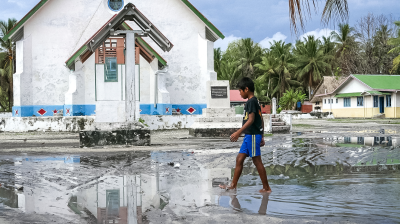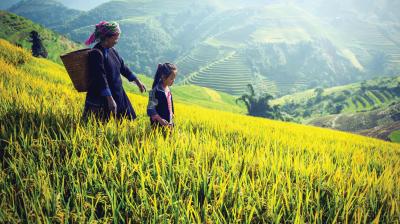Targeted Areas
Agriculture and food security
In an era of rapid population growth and a changing climate, food security remains a major concern. Changes in the onset and duration of rainy seasons, as well as the occurrence of more frequent and intense extreme weather events such as droughts and dry spells are disrupting the sustainability and resilience of agrifood systems and adversely affecting achievement of efforts to end hunger and malnutrition as elaborated in Sustainable Development Goal (SDG 2). Agriculture, including crops, livestock and fisheries, is arguably the most vulnerable sector to climate variability and climate change, with over 90% of the nationally-determined contributions of developing countries indicating the need to support adaptation in agriculture. Climate services can improve the resilience of agricultural production systems, by enabling farmers to make informed decisions about aspects such as the crops to grow, the livestock to keep, when to plant, and when to apply fertilizer, and support early warning for crop and livestock pests and diseases. Climate services are also a key aspect of anticipatory action by actors supporting food security in response to hazards such as drought. Reaching farmers and other relevant decision-makers with timely, reliable and actionable climate information and enhancing their uptake and use remains a major challenge and priority.
Disaster risk reduction
Most natural hazards are caused by weather and climate. User-friendly climate services can help countries and communities build greater resilience against floods, droughts, storms and other hydrometeorological hazards.
Energy
Energy systems are the engine of economic and social development. Energy is also at the very heart of our response to the 2030 Agenda for Sustainable Development and the Paris Agreement on climate change. Energy generation and planning of operations are affected by hydrological and meteorological events and energy systems are increasingly exposed to the fluctuations in weather and climate affecting both the sustainability of energy access and the energy demand. Given that the energy sector contributes around three quarters of global greenhouse gas emissions, rapid decarbonization to achieve net zero by 2050 is vital. Wind speed, solar radiation and river streamflow are key variables for clean energy generation and their current and future patterns can guide building the flexibility and capacity to integrate rising share of renewable energy.
Health
Climate variability and climate change have significant repercussions on where, how, and when people get sick and need health protection. Temperature and rainfall conditions influence the spread of communicable diseases, while extreme weather events cause illness, injury and death, trigger outbreaks, and disrupt health services and destroy health and water and sanitation infrastructure. By using demand-driven climate services, governments, academia, and civil society actors can protect the health of communities in a changing climate.
See also: ClimaHealth.
Water
Water is vital for life, but an over- or under-supply can threaten life, societies and economies. The amount and availability of water is strongly influenced by climate variability and change. Seasonal climate outlooks and other climate services and products can greatly improve water supply management.






